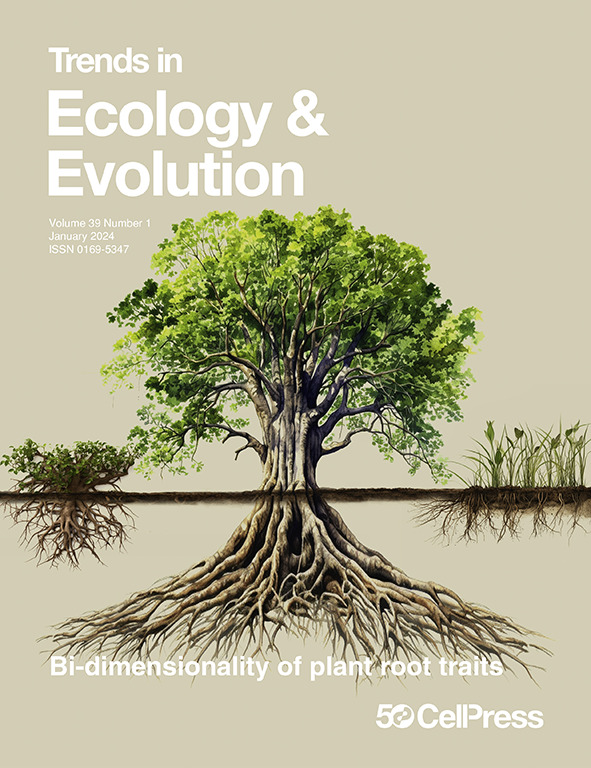编织语言:了解土著社会生态系统。
IF 16.7
1区 生物学
Q1 ECOLOGY
Trends in ecology & evolution
Pub Date : 2024-10-01
Epub Date: 2024-09-03
DOI:10.1016/j.tree.2024.08.004
引用次数: 0
摘要
语言将文化多样性和生物多样性联系在一起,有助于利用大数据和本地化方法改善保护工作。在地区层面分析土著语言有助于了解当地生态和文化振兴。经过整理的语言数据集有助于识别大规模模式(包括物种灭绝),并为生物文化决策提供强有力的多学科方法。本文章由计算机程序翻译,如有差异,请以英文原文为准。
Woven languages: understanding Indigenous socioecological systems.
Language connects cultural and biological diversity and can contribute to both big data and localised approaches to improve conservation. Analysing Indigenous languages at regional level supports understanding of local ecologies and cultural revitalisation. Collated linguistic datasets can help to identify large-scale patterns, including extinctions, and forge robust multidisciplinary approaches to biocultural decision-making.
求助全文
通过发布文献求助,成功后即可免费获取论文全文。
去求助
来源期刊

Trends in ecology & evolution
生物-进化生物学
CiteScore
26.50
自引率
3.00%
发文量
178
审稿时长
6-12 weeks
期刊介绍:
Trends in Ecology & Evolution (TREE) is a comprehensive journal featuring polished, concise, and readable reviews, opinions, and letters in all areas of ecology and evolutionary science. Catering to researchers, lecturers, teachers, field workers, and students, it serves as a valuable source of information. The journal keeps scientists informed about new developments and ideas across the spectrum of ecology and evolutionary biology, spanning from pure to applied and molecular to global perspectives. In the face of global environmental change, Trends in Ecology & Evolution plays a crucial role in covering all significant issues concerning organisms and their environments, making it a major forum for life scientists.
 求助内容:
求助内容: 应助结果提醒方式:
应助结果提醒方式:


